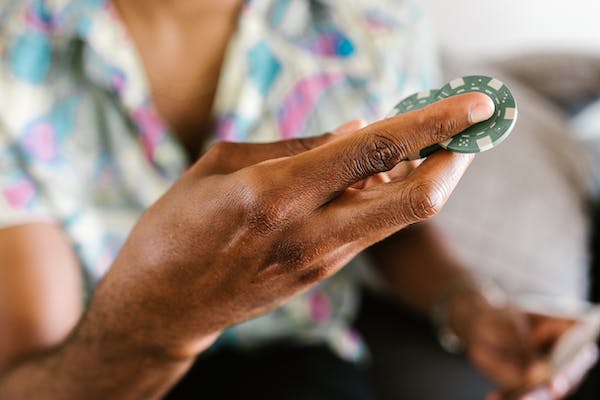“Strategic Seating: How to Position Yourself for Poker Success and Outsmart Your Opponents” is a comprehensive guide that delves into the art of seating selection in poker games. This book provides valuable insights and techniques to help players strategically position themselves at the poker table, maximizing their chances of success and gaining an edge over their opponents. By understanding the importance of seating and utilizing effective strategies, players can enhance their decision-making abilities, exploit their opponents’ weaknesses, and ultimately improve their overall poker performance.
The Importance of Strategic Seating in Poker Tournaments
When it comes to poker, position is everything. The order in which players act can greatly influence the outcome of a hand. The later you act, the more information you have at your disposal. You can observe your opponents’ actions and make more informed decisions based on their betting patterns. This is why the dealer position, also known as the button, is considered the most advantageous seat at the table. Players in this position have the luxury of acting last on every betting round, giving them a significant advantage.
On the other hand, players in early positions, such as the small blind and big blind, have the least amount of information. They must make decisions without knowing how their opponents will act. This puts them at a disadvantage, as they are more likely to make mistakes or be forced to fold strong hands. However, skilled players can still use their position to their advantage by playing more cautiously and selectively.
In addition to the dealer position, the players to your left and right can also impact your success in poker tournaments. It’s important to consider the playing styles and skill levels of your opponents when choosing your seat. If you have aggressive players on your left, they can put pressure on you by constantly raising and forcing you to make tough decisions. Conversely, having weaker players on your right can provide opportunities for easy wins and larger pots.
Another factor to consider is the chip stacks of your opponents. If you have a large stack and are seated next to players with smaller stacks, you can use your position to bully them and force them to fold. Conversely, if you have a smaller stack, it may be wise to avoid confrontations with larger stacks and focus on preserving your chips.
Furthermore, the dynamics of the table can change as players are eliminated. As the number of players decreases, the importance of position increases. With fewer players, you have more opportunities to act last and gain valuable information. It’s crucial to adapt your strategy accordingly and take advantage of the changing dynamics.
In conclusion, strategic seating is a crucial aspect of poker tournaments that can greatly impact your chances of success. Choosing the right position at the table can give you a significant advantage over your opponents. The dealer position provides the most information and is considered the most advantageous seat. However, it’s important to consider the playing styles, skill levels, and chip stacks of your opponents when choosing your seat. As the dynamics of the table change, it’s essential to adapt your strategy accordingly. By understanding the importance of strategic seating and using it to your advantage, you can outsmart your opponents and increase your chances of poker success.
Mastering Table Position: A Key Element of Poker Strategy
In the world of poker, success is not solely determined by the cards you hold in your hand. It is a game of skill, strategy, and psychological warfare. One crucial aspect of poker strategy that often goes overlooked is table position. Where you sit at the poker table can have a significant impact on your chances of success and can be the key to outsmarting your opponents.
Table position refers to the seat you occupy in relation to the dealer button. The dealer button rotates clockwise after each hand, ensuring that every player gets a fair chance at each position. However, not all positions are created equal. The earlier you have to act in a hand, the less information you have about your opponents’ actions, and the more vulnerable you are to being outplayed.
The early positions, also known as the “under the gun” positions, are the first few seats to the left of the dealer button. These positions, such as the small blind and big blind, require players to act before they have any information about their opponents’ intentions. It is crucial to exercise caution in these positions and only play premium hands. The lack of information can leave you vulnerable to strong hands from later positions.
The middle positions, which include seats between the early and late positions, offer a slight advantage over the early positions. While you still have limited information about your opponents’ actions, you have the benefit of seeing some players act before you. This allows you to gauge the strength of their hands and make more informed decisions. However, it is still advisable to play cautiously in these positions and avoid getting involved in marginal hands.
The late positions, also known as the “button” and “cutoff,” are the most advantageous seats at the poker table. These positions offer the most information about your opponents’ actions, as you get to act last in each betting round. This allows you to make more accurate reads on your opponents’ hands and adjust your strategy accordingly. In the late positions, you have the opportunity to steal blinds, bluff more effectively, and maximize your profits with strong hands.
Understanding the importance of table position is not enough; you must also know how to leverage it to your advantage. In the early positions, it is crucial to play tight and only enter pots with premium hands. This conservative approach minimizes your risk and ensures that you are only playing when you have a strong chance of winning. Patience is key in these positions, as you wait for more information to become available.
In the middle positions, you can loosen up your starting hand requirements slightly. However, it is still essential to exercise caution and avoid getting involved in marginal hands. Focus on playing hands that have a good chance of improving on the flop and be prepared to fold if the action becomes too aggressive.
In the late positions, you can adopt a more aggressive approach. Take advantage of your position to steal blinds and make well-timed bluffs. However, be mindful of your opponents’ tendencies and adjust your strategy accordingly. If you are up against tight players who are unlikely to fold, it may be more profitable to play a tighter range of hands and focus on value betting.
Mastering table position is a key element of poker strategy that can give you a significant edge over your opponents. By understanding the advantages and disadvantages of each position and adjusting your play accordingly, you can outsmart your opponents and increase your chances of success. So, the next time you sit down at the poker table, remember the power of strategic seating and position yourself for poker success.
Analyzing Your Opponents’ Seating Patterns for Better Decision Making
When you first sit down at a poker table, take a moment to observe the players around you. Notice where the aggressive players are sitting and where the more conservative ones have positioned themselves. This initial assessment will help you understand the dynamics of the table and allow you to adjust your strategy accordingly.
One common seating pattern to look out for is the “loose-aggressive” player who tends to sit in an early position. These players are known for their aggressive betting style and willingness to play a wide range of hands. By identifying them early on, you can be cautious when they are in a hand and take advantage of their loose play by playing stronger hands against them.
On the other hand, the “tight-passive” players often prefer to sit in late positions. These players are more conservative in their betting and tend to fold more frequently. By recognizing their seating pattern, you can exploit their cautious nature by bluffing more often when they are in a hand, knowing that they are less likely to call your bets.
Another seating pattern to consider is the presence of experienced players. These players often choose to sit in positions that allow them to have a better view of the table and observe their opponents’ actions. By sitting next to or across from these players, you can benefit from their expertise and gain valuable insights into their strategies. However, be cautious as they may also be observing you closely, so be sure to mix up your play to keep them guessing.
Furthermore, pay attention to the seating patterns of players who have a history of playing together. These players may have developed a rapport and may be more likely to collaborate against other opponents. By sitting between them, you can disrupt their communication and prevent them from gaining an advantage over the rest of the table.
In addition to analyzing your opponents’ seating patterns, it is crucial to consider your own position at the table. The later your position, the more information you have about your opponents’ actions before you have to make a decision. This allows you to make more informed choices and adjust your strategy accordingly. Conversely, sitting in an early position puts you at a disadvantage as you have less information to work with. In this case, it is advisable to play more cautiously and only enter pots with strong hands.
In conclusion, strategic seating is a crucial aspect of poker that can significantly impact your success at the table. By analyzing your opponents’ seating patterns, you can gain valuable insights into their playing styles and adjust your strategy accordingly. Additionally, considering your own position at the table allows you to make more informed decisions. So, the next time you sit down to play poker, remember to strategically position yourself for success and outsmart your opponents.
Leveraging Strategic Seating to Gain an Edge in Cash Games
When it comes to poker, success is not solely determined by the cards you are dealt. In fact, one of the most crucial factors that can greatly impact your chances of winning is where you choose to sit at the poker table. Strategic seating can give you a significant edge over your opponents, allowing you to outsmart them and increase your chances of success. In this article, we will explore the art of strategic seating and how it can be leveraged to gain an advantage in cash games.
One of the first things to consider when selecting your seat is your position relative to the dealer button. The dealer button rotates clockwise after each hand, and being in a late position can provide you with valuable information about your opponents’ actions before you have to make a decision. This allows you to make more informed choices and potentially exploit their weaknesses. Therefore, aiming for a seat closer to the right of the dealer button is generally considered advantageous.
Another important aspect to consider is the skill level of your opponents. If you find yourself surrounded by experienced and skilled players, it may be wise to choose a seat that allows you to act after them. This way, you can observe their actions and adjust your strategy accordingly. On the other hand, if you are confident in your abilities and believe you can outplay your opponents, sitting in an early position can give you the opportunity to put pressure on them and control the flow of the game.
Furthermore, the dynamics at the table should also be taken into account. If you notice that certain players have a tendency to be aggressive or overly cautious, positioning yourself accordingly can give you a significant advantage. For instance, sitting to the left of an aggressive player allows you to act after them, giving you the opportunity to counter their moves and potentially exploit their aggression. Conversely, sitting to the right of a tight player can allow you to steal their blinds more frequently.
In addition to considering the players around you, it is also important to pay attention to the physical layout of the poker room. For instance, sitting near the entrance or the bar can be distracting, as it may lead to constant foot traffic and noise. On the other hand, sitting near the dealer can provide you with a better view of the entire table, allowing you to gather more information about your opponents’ actions and reactions.
Lastly, it is crucial to remain adaptable and flexible in your seating choices. As the game progresses and players come and go, the dynamics at the table can change. Therefore, being willing to switch seats when necessary can help you maintain an advantageous position throughout the game. Additionally, observing the actions and tendencies of new players can provide you with valuable insights that can be used to your advantage.
In conclusion, strategic seating is a vital aspect of poker that should not be overlooked. By carefully selecting your seat based on factors such as position, skill level of opponents, table dynamics, and physical layout, you can gain a significant edge over your adversaries. Remember to remain adaptable and flexible, as the game evolves, and be prepared to switch seats when necessary. With strategic seating, you can position yourself for poker success and outsmart your opponents.
Seating Strategies for Online Poker: Maximizing Your Advantage
In the realm of online poker, where physical proximity is not a factor, seating strategies take on a different form. Maximizing your advantage in online poker requires a keen understanding of the virtual environment and the dynamics at play. While you may not be able to physically position yourself at a table, there are still several key factors to consider when choosing your virtual seat.
First and foremost, it is important to consider your position relative to the dealer button. The dealer button rotates clockwise after each hand, and being in a late position can provide you with valuable information about your opponents’ actions before you have to make a decision. This allows you to make more informed choices and potentially exploit weaknesses in your opponents’ strategies.
Additionally, being in a late position allows you to control the size of the pot. By observing the actions of your opponents before you, you can gauge the strength of their hands and adjust your betting accordingly. This can give you a significant advantage in maximizing your winnings and minimizing your losses.
On the other hand, being in an early position can be more challenging. You have less information about your opponents’ hands, which makes decision-making more difficult. However, being in an early position also allows you to set the tone for the hand and potentially bluff your opponents into folding. It requires a careful balance of aggression and caution to succeed in an early position.
Another important consideration in online poker is the seating position relative to aggressive players. If you find yourself seated next to a player who frequently raises and re-raises, it can be advantageous to position yourself on their left. This allows you to act after them, giving you the opportunity to counter their aggressive play and potentially exploit their tendencies.
Conversely, if you are seated to the right of a tight and passive player, you can take advantage of their cautious approach by stealing blinds and pots more frequently. By recognizing and adapting to the playing styles of your opponents, you can strategically position yourself to maximize your advantage.
In conclusion, strategic seating is a crucial aspect of poker that should not be overlooked. Whether you are playing in a physical casino or participating in online poker, understanding and utilizing seating strategies can greatly enhance your chances of success. By considering your position relative to the dealer button, observing the playing styles of your opponents, and adapting your strategy accordingly, you can outsmart your opponents and improve your chances of winning. So, the next time you sit down at a poker table, remember that where you sit can make all the difference. Strategic seating in poker is an important aspect of the game that can greatly impact a player’s success. By positioning oneself strategically at the poker table, players can gain advantages over their opponents and increase their chances of winning. Factors such as observing opponents’ playing styles, taking advantage of position, and managing table dynamics are crucial in outsmarting opponents. Overall, understanding the importance of strategic seating and implementing effective strategies can significantly improve a player’s overall poker performance.




